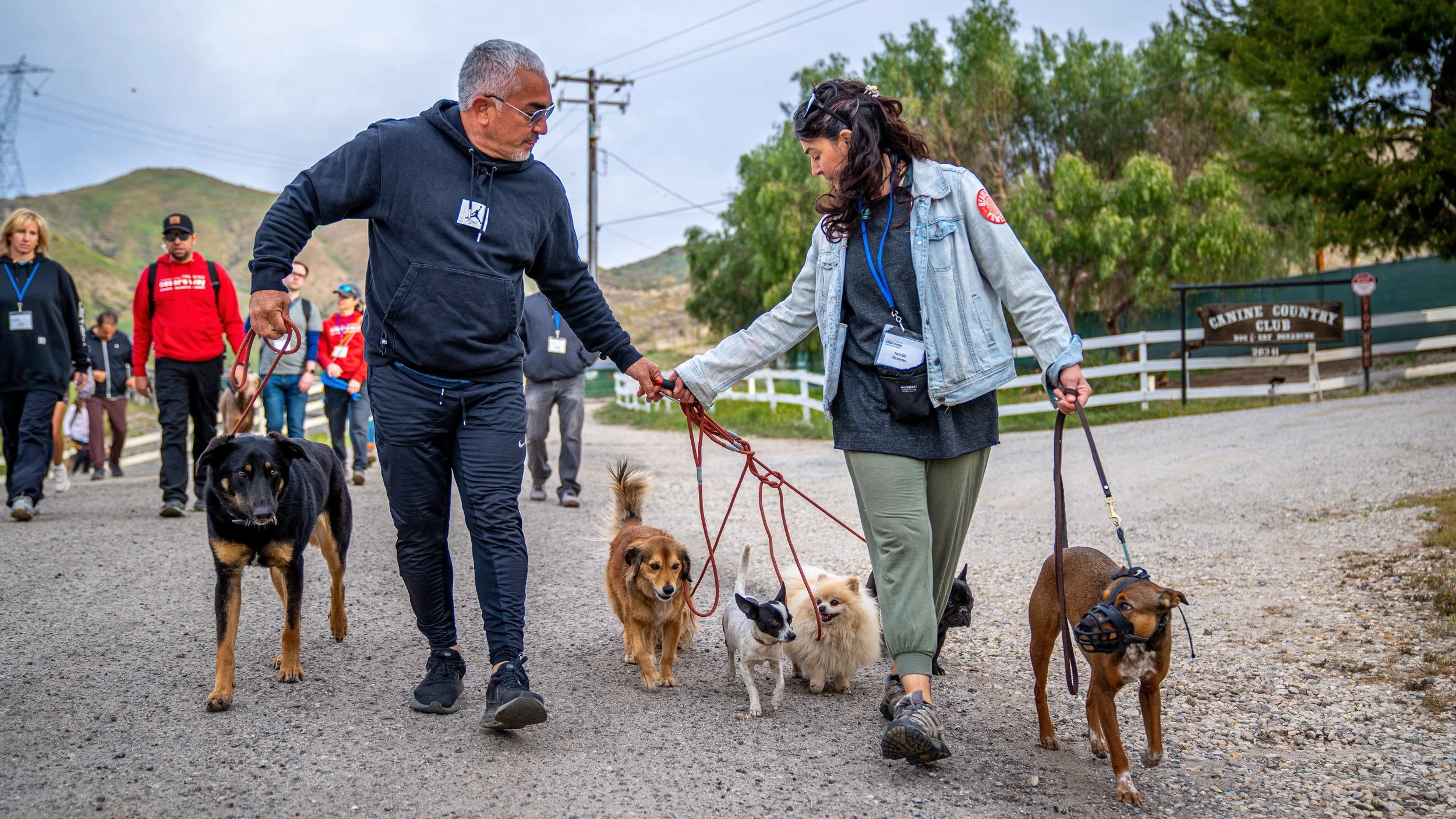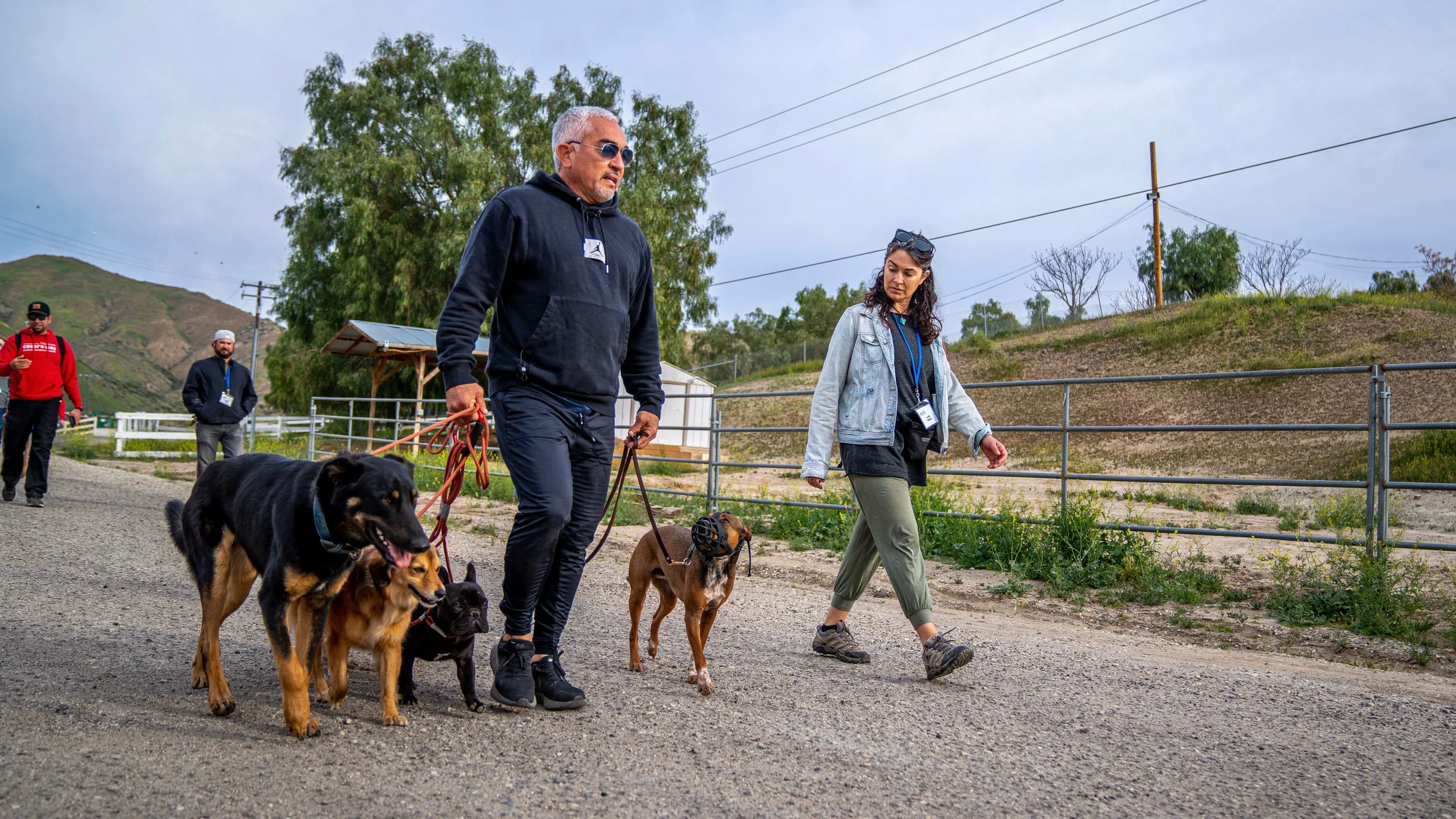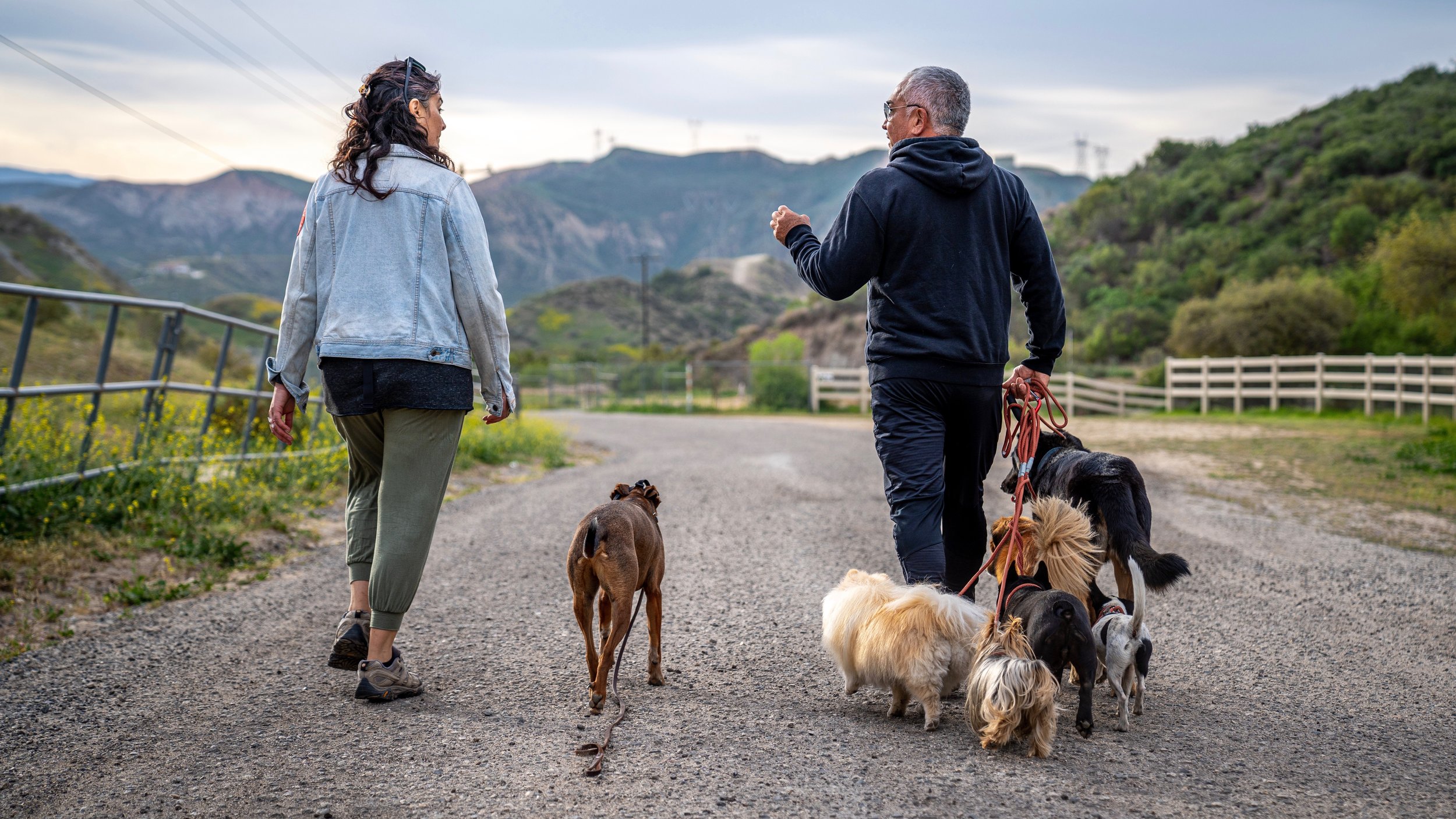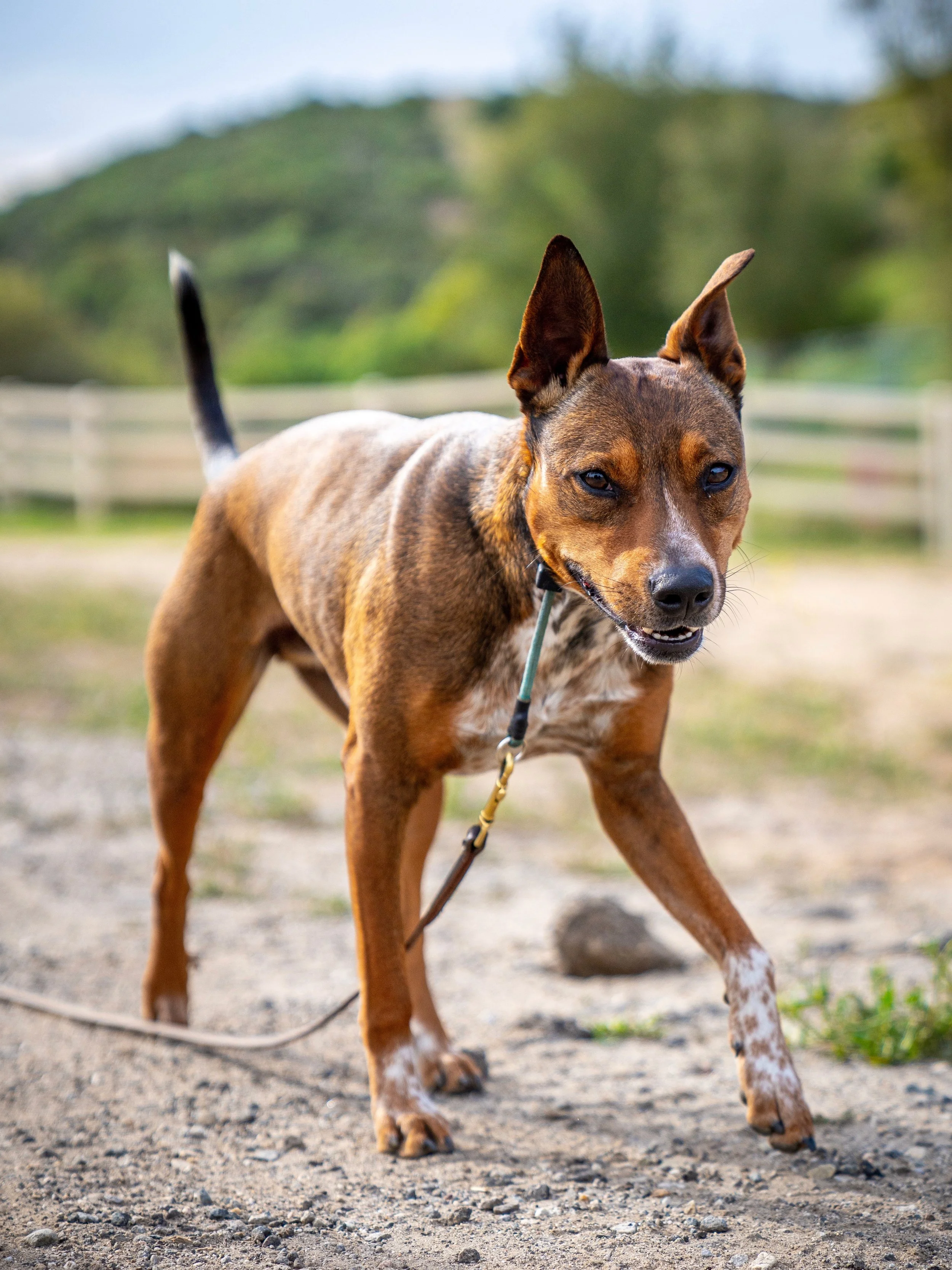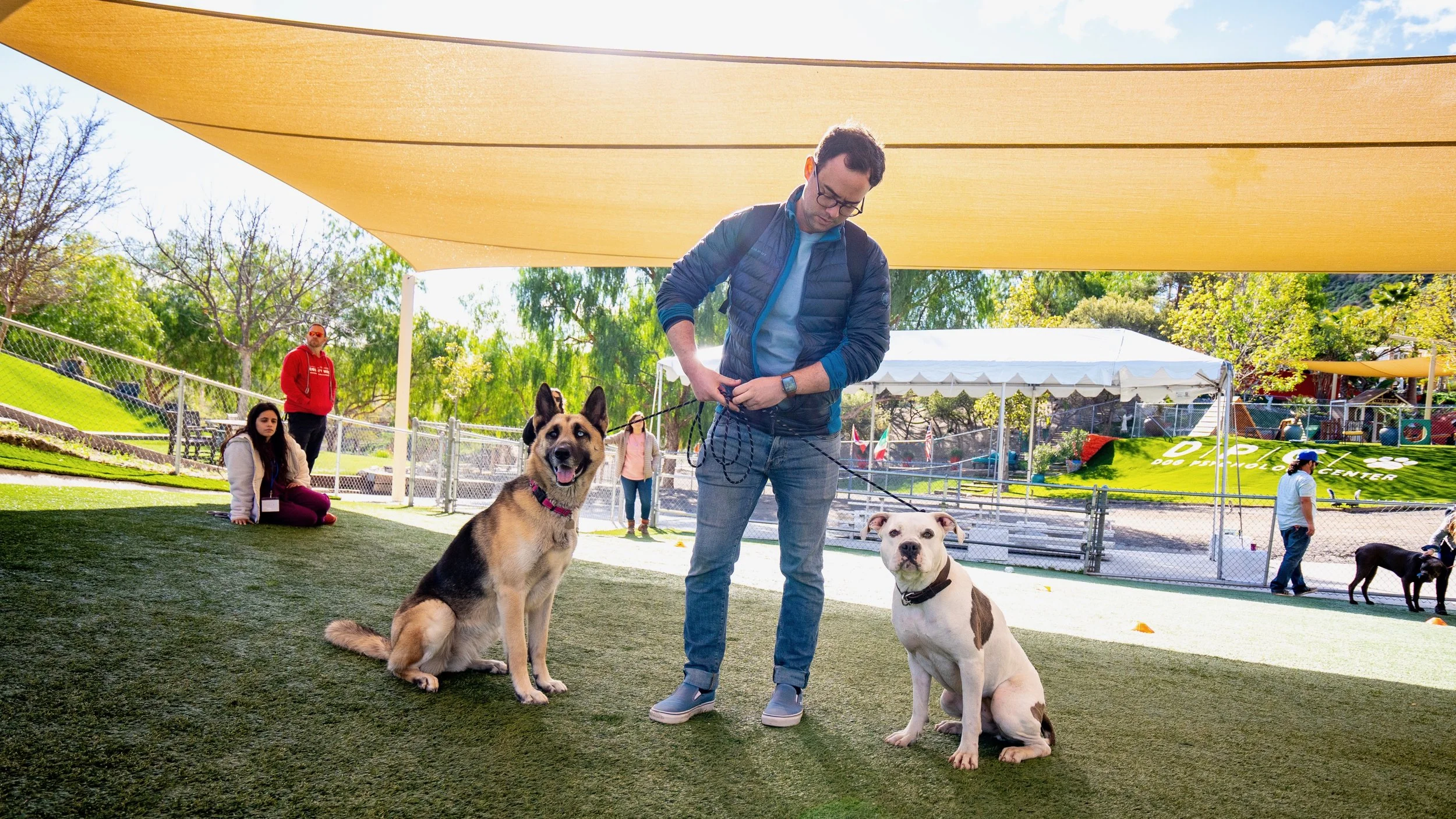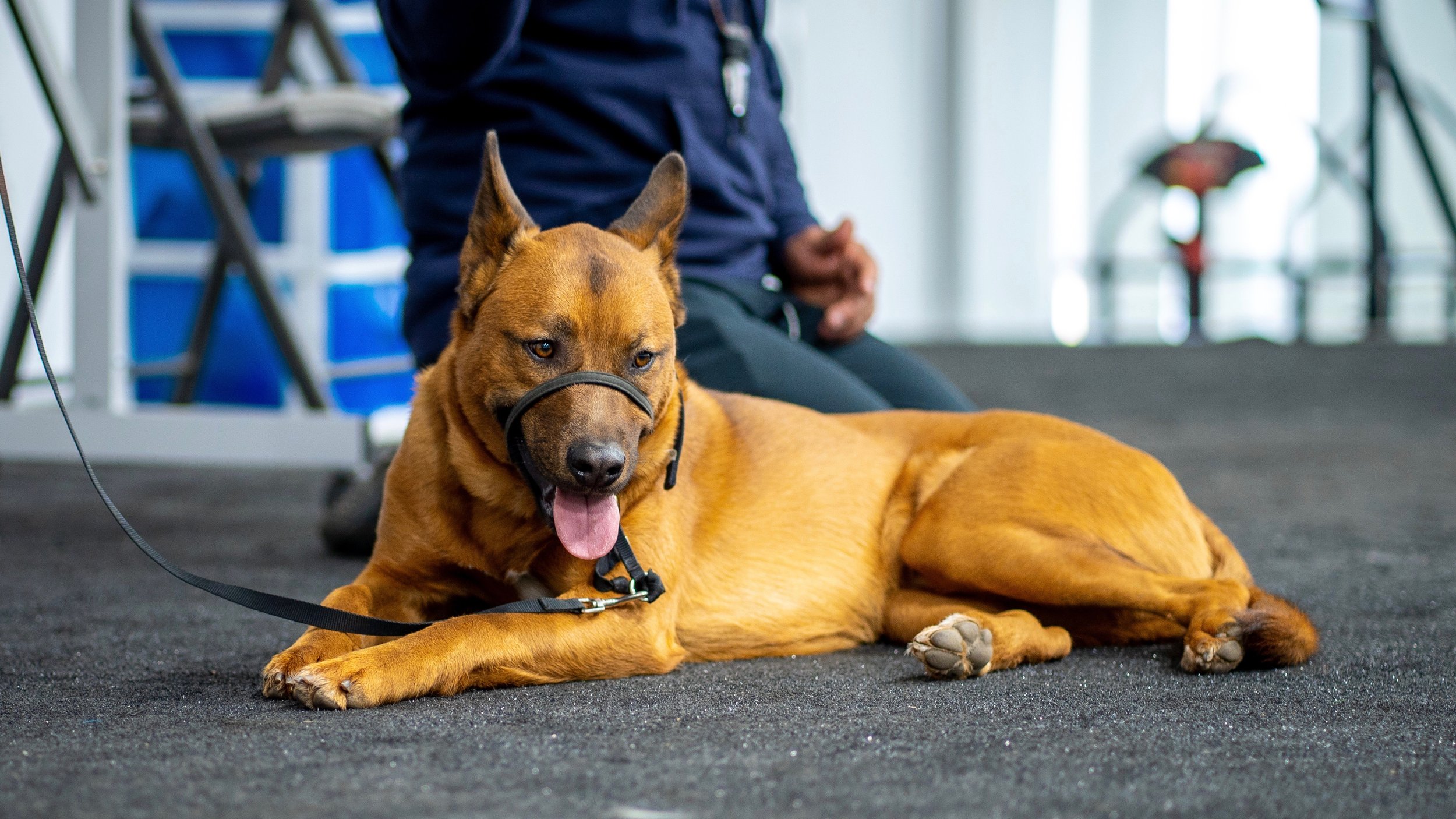What to look out for and avoid when finding a Dog Trainer… (in the opinion of another a dog trainer.)
Okay - so technically I’m a behaviourist more than a trainer. But still…
There is a joke in my industry that the only thing which two dog trainers agree on is that the third dog trainer is wrong. And whilst it is certainly true that there is a great deal of variation in terms of tools, techniques and philosophy in the industry - I think its important to bring attention to some of the most common ‘poor’ experiences of dog training to look out for - from the techniques that won’t help, but won’t hinder - to the advice that is dangerous or negligent.
Its important to note that in a field which often relates to canine professionals on a scale, from ‘Force-free’ through to ‘Compulsion-based’ training, poor practice exists across the spectrum, and normally with your dogs on the end of the lead.
I was always taught never to criticise unless you can do something better - so in each scenario we will also talk about why the technique doesn’t work, what the risks are, and what my alternative would be. Every dog and every scenario is different, but hopefully this blog will share some light on things you might have been taught in the past that didn’t work, or advice you’ve been given which goes against your gut feeling.
Distraction, Isolation, Medication (DIM)
This particular approach is probably one of the most common practices in the industry, and can be seen even in large organisations some of the UK’s largest rescue organisations. It sounds something along the lines of “If you dog is reactive to other dogs, then every time you see another dog, throw chicken on the ground or wave a toy in his face so that he doesn’t see the dog. If that doesn’t work, you should probably keep them away from other dogs. Walk late at night, go to quiet areas. (Many centres’ conditions of rehoming often include ‘must live in a quiet rural area where they will not meet other people or dogs). And if you’re still finding that structure too stressful, medicate your dog. Put them on a sedative so that they’re easier to manage. The 4th letter that I sometimes hear about is E - for Euthanasia - and the sad reality is that for many DIM(E) trainers, their poor methodology often leads them quickly down the path that the dog cannot be helped, and should simply be destroyed.
The risk - in most cases, DIM training just involves a great deal of time and money from the owners point of view, with very little if any long term change - because the issue is never addressed and the dog is never taught how to succeed in situations they find stressful. These dogs and their owners spend a long time stuck in a pattern of behaviour which can feel incredibly isolating. In the worst case scenario, DIM(E) results in a dog that is destroyed because of poor diagnosis or a lack of professional experience, under the guise of a ‘purely positive’ form of training.
The alternative: Assess and Evaluate - Tools & Techniques - Pack Walk every case should start with proper assessment and evaluation so that you know why your dog is reacting, and how the existing set up as far as relationship and tools could be making the relationship worse. If your dog is reacting because it is excited and/or frustrated about dogs for example, and that dog is on a harness which catalyses an aggressive state - one of the easiest steps to make would be to switch that tool for a halti, head collar, or figure 8 lead - which significantly reduces strength, and often has an immediate positive impact on reactivity. The owners would then want to focus on regular, exposure to calm, confident dogs through structured on lead walking, and going to busier environments (historic towns and villages are great!) where their dog would be less likely to fixate on other dogs. If, as a comparison the diagnosis was a fear based reactivity, or a possessive/territorial relationship with the owner - activities like place work in the home, and a focus on helping a dog feel ‘protected’ on the walk would be essential additions to controlled socialisation through a dogs '‘proximities'“.
Punish, Punish, Punish.
Another very common experience that owners have is working with trainers who focus almost entirely on correcting or punishing the dog for disagreeable behaviour. Dog jumps up when you come through the door? knee them in the chest. Dog too excited at home? Throw your keys at it. Dog barking? Hard pop on the lead. Dog growling at you? Yell at your dog, grab their collar, pin them down. It is very common that clients who have experienced months of trying to train in a ‘positive’ way through a DIM trainer often switch out for a more traditional form of training.
The risk - if you build a relationship with your dog based on a very high level of physical correction, your dog will learn to anticipate high levels of physicality. In the same way, if you try to change from an entirely passive to actively physical way of interacting with your dog - and their are already underlying issues in the relationship, the very real likelihood that your dog will escalate in their behaviour towards you is high. I have worked with clients who have been sent to the hospital with serious bite wounds because they tried to pin their dog that was growling because it was nervous. I have worked with clients who dogs will lunge and growl or bite at them when they enter a room because they anticipate having their collar grabbed.
The alternative - I am certainly not opposed to a corrective element in training, and I work with some incredibly intense and dangerous cases. But there are two essential elements to understanding the function and application of a correction. First, the point of a correction is exclusively to immediately interrupt a behaviour that you find disagreeable. Second - any corrective element should come on top of a foundation of a solid conflict resolution system - in which you have consistently taught your dog for a long period of time that every time you disagree with a behaviour, the way for your dog to end the disagreement is to sit down and relax. Thats it - that’s all - end of. This principle, Correction, Direction, Outcome - where the direction is to ask my dog to give space, and the outcome is for them to relax, is one of the most basic principles I work on - and I will not move forward with any other work until I am happy that a dog knows this 100%. I want a dog to know that all I ever want from them if I am disagreeing with them is to walk away and take a moment to relax - a great rule for life and an essential foundation for every dog.
Dog is jumping up at you? Step towards them and follow through to sit, then walk on. Dog too excited at home. Use a lead to immediately block running around or jumping, and guide them to sit down on their bed. Follow through and repeat as many times as necessary. Dog barking? interrupt them immediately with sound, presence or a lead to guide them away from what they’re barking at - follow through to a sit, or to lie down on their bed. Dog growling at you? Get them straight up to us for an assessment - so we can figure out what’s gone wrong in your relationship. And never, ever increase physical force unless you want a trip to A&E.
Dogs = BAD. Cheese = GOOD. Dogs + Cheese = GOOD.
Another incredibly common principle which I see clients taught time and again is this “positive association” method. The methodology on its face looks like it should work brilliantly, and it sounds like it makes sense. If I give my dog food every time they see something they’re reactive too, surely they will begin to feel good about it, right? Wrong.
Dogs are, believe it or not, far more intelligent than we give them credit for. I have never, ever met a dog with reactivity issues that looked at other dogs and thought “Dogs = bad”. Dogs know their own species well, and they have complex motivations for why they might react. E.g a nervous dog reacts because it wants the other dog to give it space, or it is put in a position of responsibility in its relationship with the owner. A dog that is dog aggressive may be acting on high prey drive, which means all it wants to do is run towards the dog and.. well.. not exactly say hello. A dog that is over excited actually feels GREAT about other dogs - too great in fact. The point here is, our pets are acting based not only on a specific goal, but a state of mind - and when we give food at that point, we are nurturing that goal and that state of mind.
The risk - Food is a stimulus. it isn’t good, or bad. It has no moral value at all. for dogs, food represents excitement, curiosity, anticipation. (Food, in simple terms = dopamine release). Which means if you have a high prey drive, coiled spring type dog on your lead, your dog may ricochet straight off your food into the other dog. The food becomes the spark for the reaction. If you have a nervous dog, it will likely completely refuse to take food - and will begin to relate the scent to their nervousness or anxiety, which means that offering the scent of food becomes an additional layer to their nervous experience. An over excited dog is just going to become even more excited when you offer more stimulus on top of what is already motivating them. Offering food certainly isn’t going to cause your dog harm, but it can most definitely increase the behaviour you’re trying to resolve.
The alternative - we first have to understand state of mind. Fight, Flight, Avoidance, Calm surrender. These 4 states are the pillars of how your dog feels when working through imbalanced behavoiur - and our job as owners is to be able to send our dogs out of Fight, Flight, Avoidance, into a Calm surrender state. If we can achieve that - and only if we can achieve that in a given moment, we could mark the state of mind using food as a reinforcer. However - even then, you may find that all the energy you put into creating calmness with your dog was undone the moment you ‘rewarded’ (stimulated) them with excitement through food, voice, and touch. With my clients, we do a lot of work on calm massage, which releases the hormone Oxytocin - as opposed to the stimulating affect of dopamine that food can trigger. Create calm, nurture calm.
Of course - your real goal should be for your dog not to react in the first place, but its important to understand that if your goal is calm, and you can use “Correction, Direction, Outcome” to ask for calmness, which you can nurture with massage - you can at least begin to understand the basics of where you might be going wrong.
Be the BOSS. (And yes, I trained with Cesar).
The final example of a poor methodology, and one that I am deeply passionate about helping people with, is the “Be the Boss” Mantra. I say this as someone who has personally trained with Cesar Millan, and use his core principles as much of the work we do with dogs - which is why I know what happens when people who do not understand these principles, try to apply a ‘one-liner’ to dog behaviour. Ultimately, it comes down to Cesar’s rule number one - in the Dog World, human beings are Energy. When the energy goes bad, everything goes bad.
I know a number of clients who have worked with trainers who told them that they need to “be the boss” of their dog. I remember one client who told me another trainer came and cornered her nervous dog in the living room for 45 minutes waiting for the dog to submit to him. It’s amazing just how badly you can f*** things up when you’ve watched a few episodes of a TV show and think you’re an expert. The reality of dog behaviour and dog psychology, for professionals around the world who are part of the Cesar’s Way family - is deeply removed from what TV Executives put together for entertainment.
The risk - any case that has no assessment and evaluation, no attention to the energy shared between the dog and the owner, and a relationship built without Trust Respect and Love is going to end badly. Dog’s can lash out and bite, issues can escalate - trust can be eroded.
The alternative - The goal for every single owner should be to embody Calm, Confidence, Love and Joy in every interaction you do with your dog - and as every single case starts with assessment and evaluation, we look at what the dog needs, and what is missing in the owner. The overwhelming majority of cases tend to be an issues with the “Calm, Confident” part of the equation - or what Cesar used to call Calm and assertive. Most people think they need to be more forward and more confident, which means the first thing that gets lost (and the most important thing) is calm. Someone who is confident but not calm is a Drill Sergeant and someone who is Calm but not confident is indecisive, passive or unsure. Love and Joy without calmness creates over excitement and chaos - so all elements need to come together when working with any dog. We also need to be aware of the importance of Trust Respect and Love. Nervous dogs need someone who can help them build trust, not someone who demands respect. The best way to build trust is, of course, through the walk. Allowing a dog to share your space, and practice ‘Trust’,’Follow’ in an open area is a brilliant way of building trust. One of the first things I do with my clients is to go on a walk, so that I can assess and evaluate - an its the best way of introducing yourself in a low pressure scenario.
Cesars analogy is that we should all be like a paramedic when we work with our dogs on behavioural issues. Think about how you would want a paramedic to be if you fell and broke your leg. Would you want the paramedic to turn up, tell you that you’re being dramatic and just walk it off? I doubt it! Would you want your paramedic to turn up and burst into a panic, or start offering you cake and cuddles? I’d certainly hope not! Most of us would want someone who was calm and confident in their ability help, who shared genuine care and put us at ease - providing clear direction when needed and using the tools and techniques of their trade to offer us safety and protection. Words are powerful in changing the way that we feel - and my advice to my clients is to find the word that embodies Calm, Confident, Love Joy for you.
Leader - Coach - Teacher - Guide - Paramedic - Pastor - Parent - Pack Leader - Matriarch - Captain - Pilot

